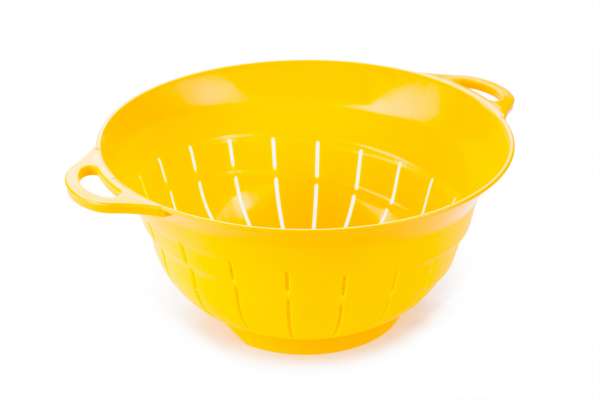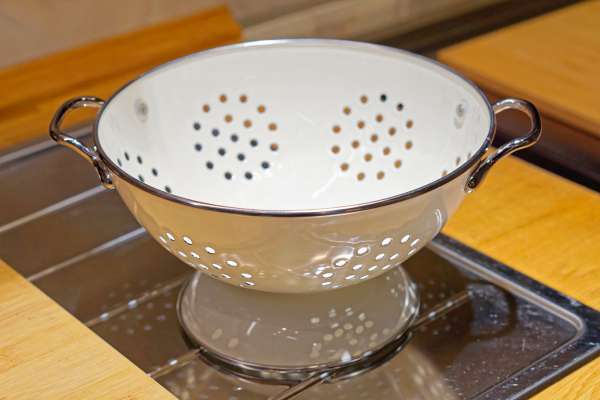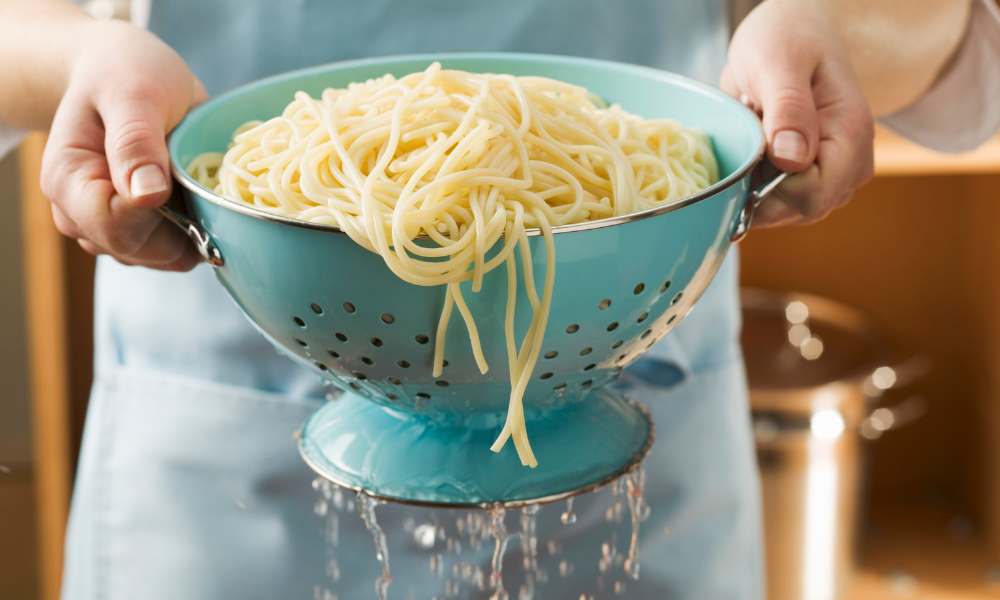A colander serves as an essential kitchen utensil designed to streamline the process of separating liquids from solids, making tasks such as rinsing vegetables, fruits, and draining pasta remarkably effortless. Its perforated nature allows water to pass through while securely holding the items inside, preventing them from washing away. This makes a colander an indispensable tool for cooks who prioritize efficiency and convenience in their culinary preparations. Whether it’s for washing ingredients to ensure they’re clean or for ensuring pasta and grains are perfectly drained, the colander plays a pivotal role in the kitchen.
What Is A Colander?
What Is A colander, a versatile kitchen accessory characterized by its bowl shape with numerous small holes perforated throughout. This design is specifically engineered to facilitate the drainage of water while retaining solid food items within its structure. Typically used in the preparation of meals, a colander simplifies the process of rinsing fruits and vegetables, as well as draining boiled foods like pasta, rice, and vegetables. Its functionality makes it an indispensable tool in kitchens worldwide, assisting in the seamless execution of various culinary tasks.
Types Of Colanders
1. Metal Colanders

Plastic colanders, on the other hand, offer the advantage of being lightweight and often more colorful, adding a dash of vibrancy to the kitchen. They are typically more affordable than their metal counterparts and are ideal for those who prioritize ease of handling and storage. However, they may not withstand high temperatures as well as metal colanders and could absorb odors over time.
2. Plastic Colanders

Silicone colanders represent the innovation in kitchen tools, boasting flexibility and heat resistance as their main attributes. These colanders can be collapsed for easy storage, making them perfect for kitchens with limited space. Additionally, silicone is known for its durability and resistance to both stains and odors, making these colanders a hygienic option that can handle a wide range of temperatures without suffering damage.
3. Silicone Colanders

Each type of colander, whether metal, plastic, or silicone, serves the primary function of draining liquids while keeping solids intact. The choice between them often boils down to personal preference, the specific culinary task at hand, and the desired longevity and maintenance level of the utensil. Regardless of the material, a colander remains a fundamental component in the efficient and hygienic preparation of meals.
How Does A Colander Work?
A colander is a versatile kitchen tool characterized by its bowl shape and numerous small holes or perforations throughout its structure. This design is purposefully engineered to facilitate the draining of water or other liquids from food items while retaining the solids within its confines. Primarily used in the preparation of foods that require washing or draining, a colander simplifies tasks such as rinsing fruits and vegetables, draining cooked pasta, or washing rice before cooking. Its straightforward functionality hinges on the principle of gravity, where liquid, being less solid than the food items, escapes through the holes under the force of gravity, leaving the solid contents behind.
The Science Behind Draining
The types of colanders available on the market today vary in material, each offering its unique advantages. Metal colanders, typically made from stainless steel or aluminum, are prized for their durability. And resistance to rust and corrosion, making them a long-lasting choice for many kitchens. Plastic colanders, on the other hand, are lightweight and often more affordable, coming in various colors to match kitchen aesthetics. Though they may not withstand high temperatures as well as metal ones. Silicone colanders present a modern alternative, known for their flexibility, heat resistance. And the ability to collapse for easy storage, making them an excellent option for kitchens with limited space.
The Multifaceted Uses Of Colanders
The multifaceted uses of it extend beyond just draining pasta or washing produce. They can be employed in a variety of kitchen tasks, such as steaming vegetables by placing the colander over a pot of boiling water and covering it, ensuring the vegetables are cooked through the steam that passes through. Colanders can also be used to sift dry ingredients for baking, proving their versatility and indispensable nature in culinary preparations. Whether for draining, washing, steaming, or sifting, the colander remains a fundamental tool in the kitchen, showcasing its array of uses in daily cooking and food preparation activities.
Choosing the Right Colander

When selecting the ideal colander for your kitchen, considering the size and shape is crucial. A large colander can accommodate bigger batches of pasta or vegetables. Making it suitable for families or those who often cook in bulk. However, a smaller colander might be more practical for individuals or smaller tasks, such as washing berries or draining cans of beans. The shape also plays a role in its utility; deep colanders are excellent for holding. A significant amount of food, while shallow ones might be preferable for rinsing or draining with ease of access.
Maintenance and Care

To ensure the longevity of your colander, proper maintenance and care are essential. Metal and silicone It generally withstand dishwasher use, making them easy to clean and maintain. However, with plastic colanders, it’s advisable to check if they are dishwasher safe to prevent warping. Regular cleaning is vital to prevent food particles from clogging the perforations. Avoid using abrasive cleaners or pads on metal colanders to prevent scratching and rusting. For silicone and plastic colanders, avoid direct exposure to high heat sources to prevent melting or deformation.
How Often Should I Replace My Colander?
The frequency of replacing your colander depends on its material and how well it’s maintained. Metal colanders can last many years with proper care. In contrast, plastic colanders might need replacement more frequently due to potential warping or staining. If you notice rust, significant discoloration, or deformation in your colander, or if it no longer drains efficiently, it’s time for a replacement.
Can Colanders Be Used For Storage?
While colanders are primarily designed for draining and rinsing. They can be repurposed for short-term storage, especially for items that benefit from air circulation, like freshly washed fruits and vegetables. They are not ideal for long-term storage due to the lack of a seal to protect contents from drying out or absorbing fridge odors.
Conclusion
Choosing the right colander involves considering size, shape, and the types of foods you frequently prepare. Proper maintenance ensures its longevity and continued efficiency in your kitchen routines. While replacement depends on the material and care of the colander, it’s important to recognize when it’s time for a new one. Although not designed for storage, creative uses of colanders can offer temporary solutions for specific needs. Ultimately, a colander remains an indispensable tool in the culinary arsenal, offering versatility beyond its simple, perforated design.
